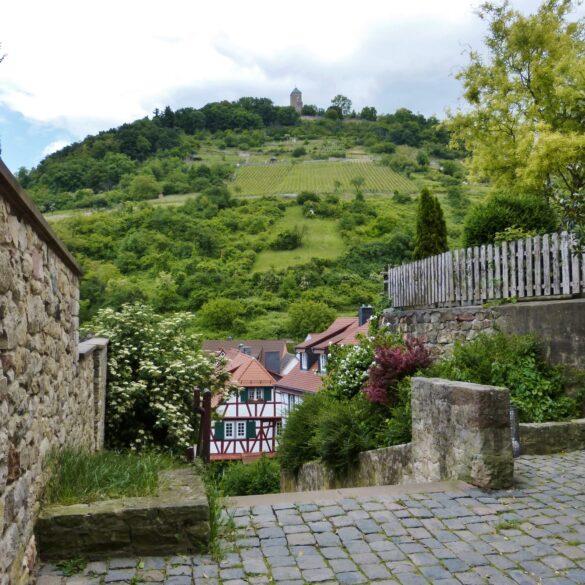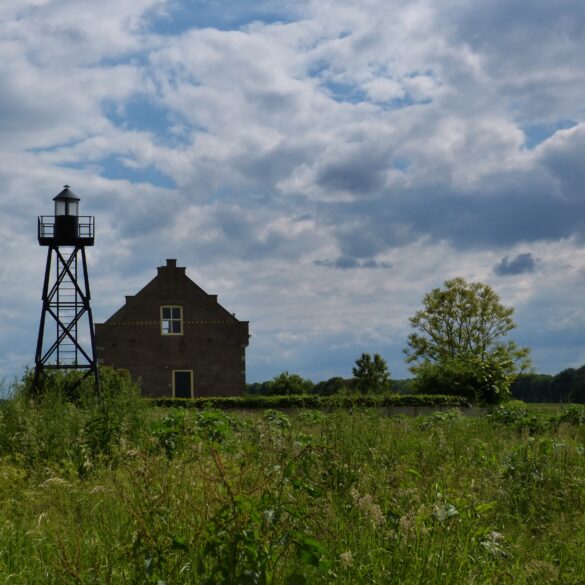One of the biggest beer festivals in Germany is the Bergkirchweih in the Bavarian town of Erlangen.
The Bergkirchweih is an open-air festival that takes place for 12 days every year and attracts about a million visitors a year. It started way back in 1755.
We spent two nights in Erlangen to check out the festival this year. We drove there after I finished work on a Thursday, went to the festival on Friday and drove back home on Saturday.
Before going to the festival we walked around the town, but first we needed some coffee and a bite to eat.
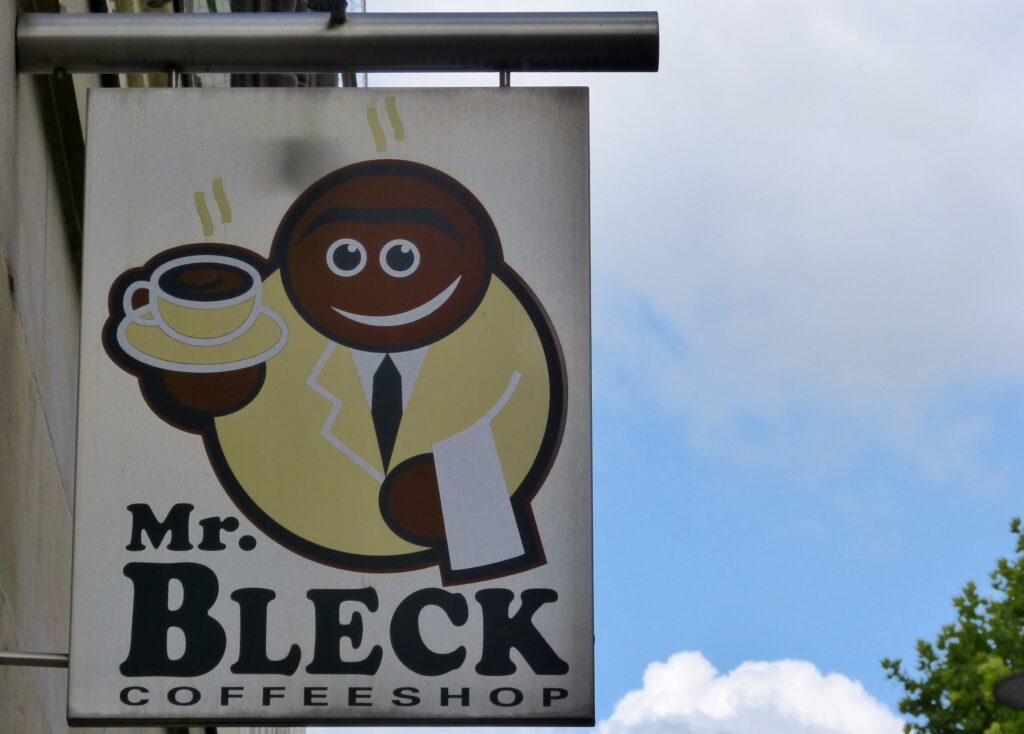
I know “Mr. Bleck” doesn’t sound very appetizing to English-speakers, but we had some very good coffee drinks and strawberry muffins there.
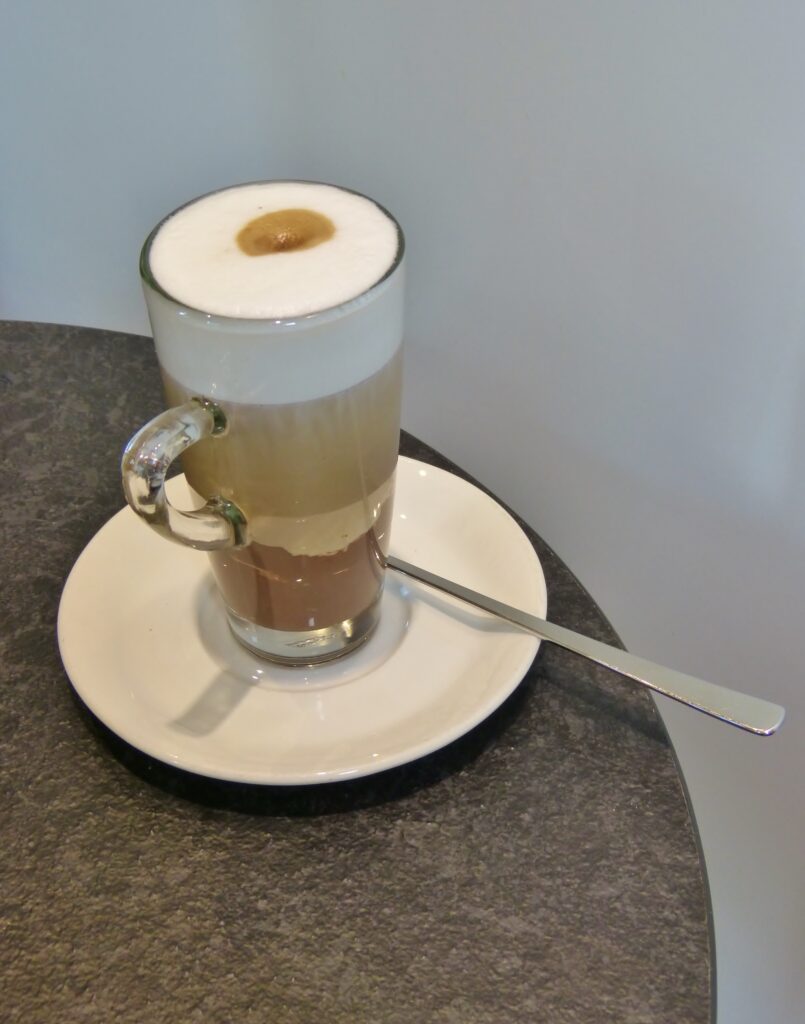
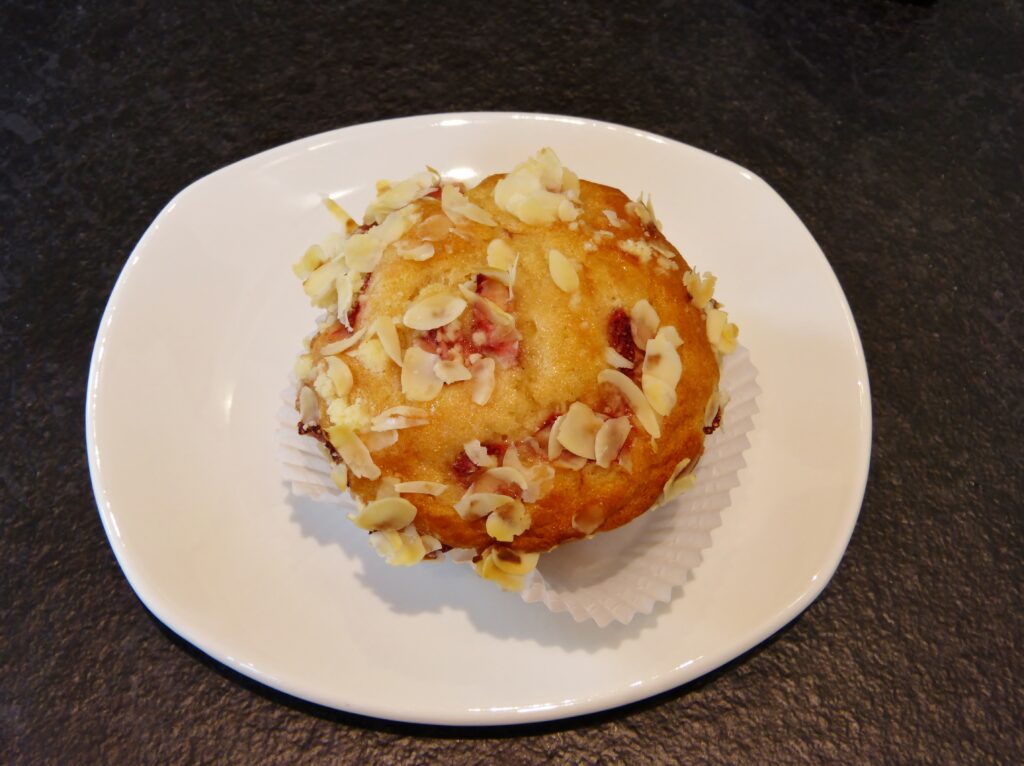
Mr. Bleck is a chain and we saw several of them around town.
Speaking of chains….
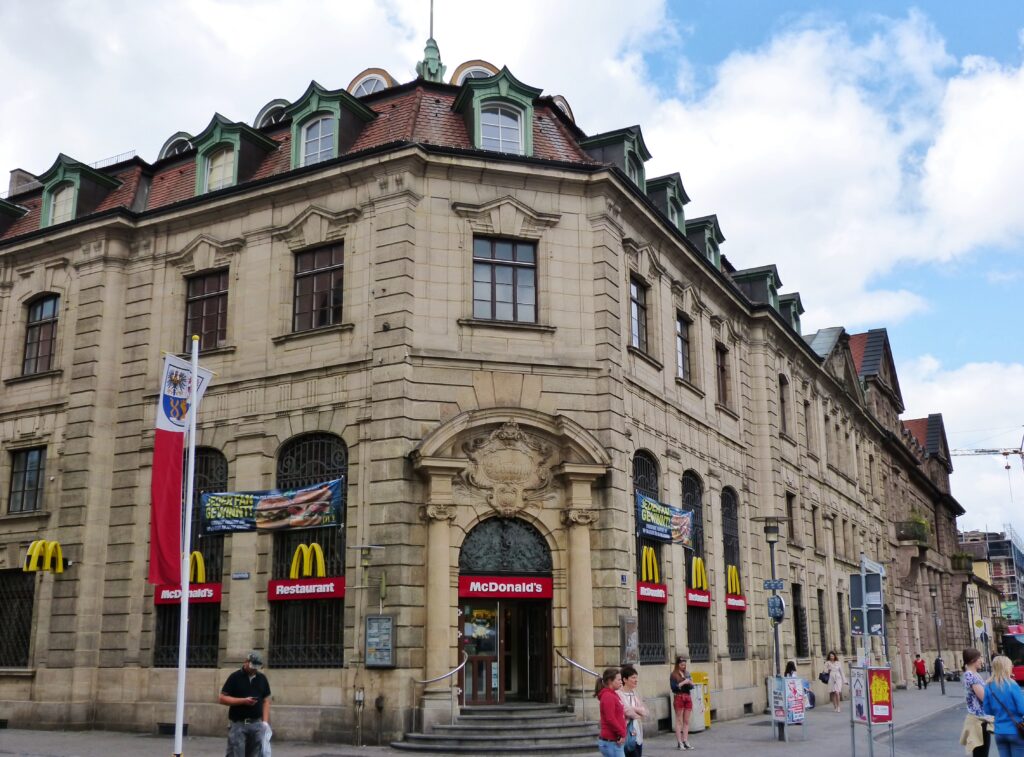
I guess if you have to have a McDonald’s, you might as well have it in a building that looks like this!
Erlangen has a website you can connect to on your mobile phone to download information about different points of interest, so we did that.
There are three different tours you can follow. Two of the tours are called “Huguenot Town” – there is a quick tour and an extended tour. The Huguenots were a group of Protestants who fled France to avoid religious persecution. About 50,000 of them fled to Germany and a large population settled in Erlangen in the late 17th century.
The third tour is called “City of Beer”. In the 19th century, Erlangen had 18 breweries and exported a lot of beer to various countries, including the United States. Today only two of those private breweries remain, Kitzmann and Steinbach.
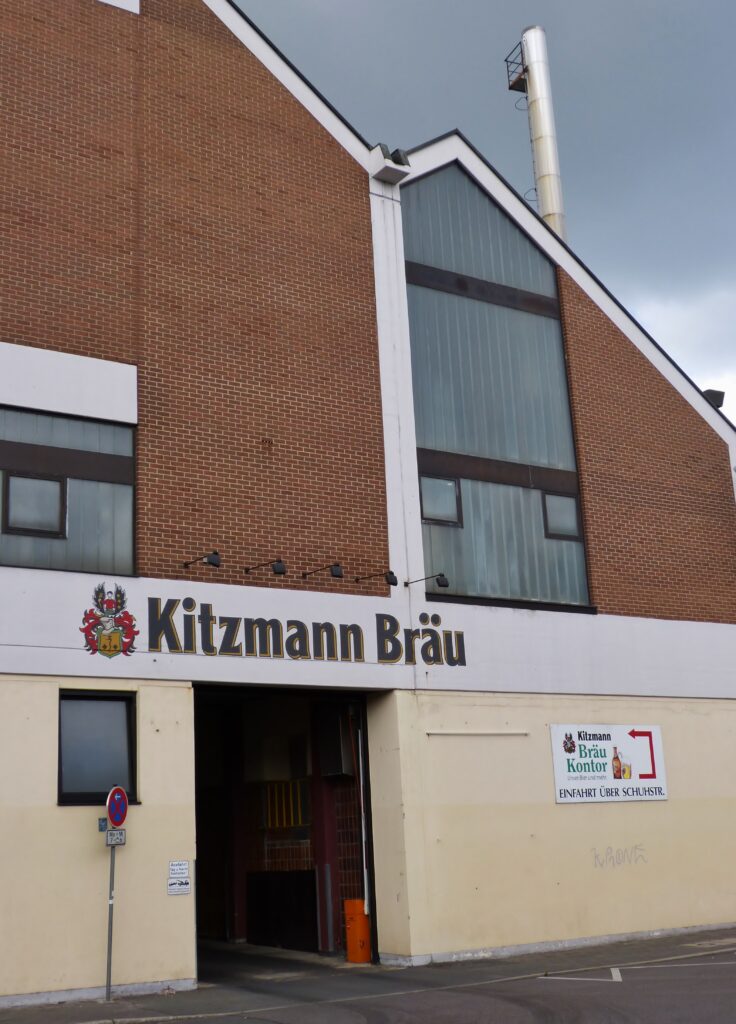
The Kitzmann brewery has been brewing beer for over 300 years. The audio tour even refers their beer as “fine tipples” so it’s perfect for this blog!
This is the first Huguenot church built in Germany.
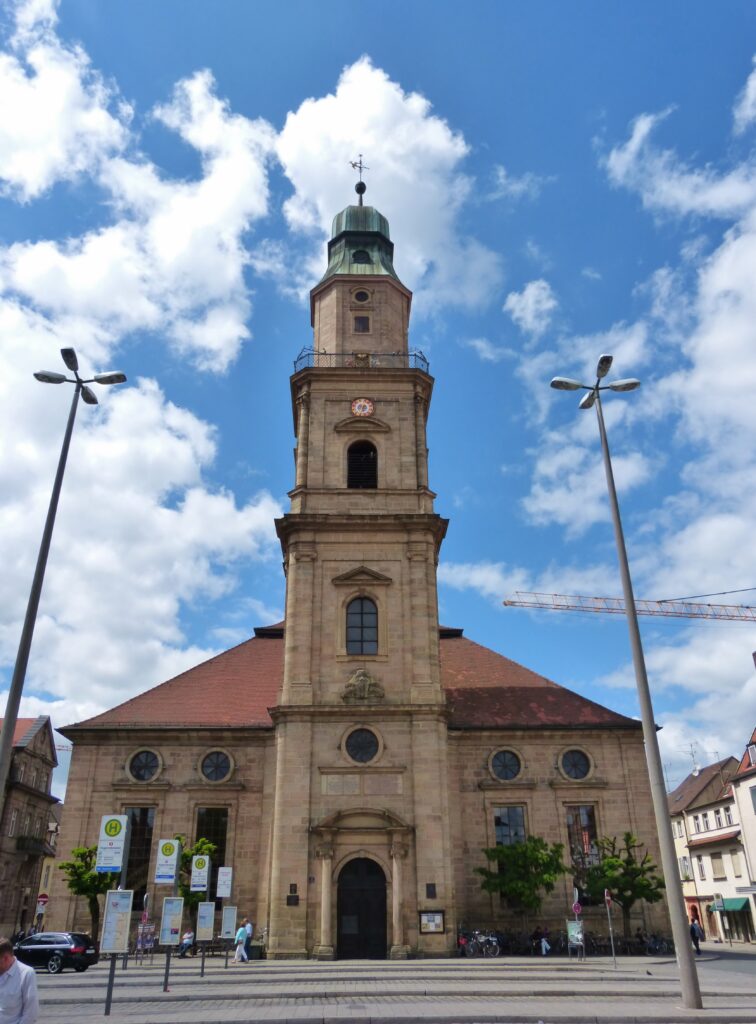
It was built between 1686 and 1693. The tower was built later, in the 18th century.
Here is the former Margravial Castle, made out of sandstone.
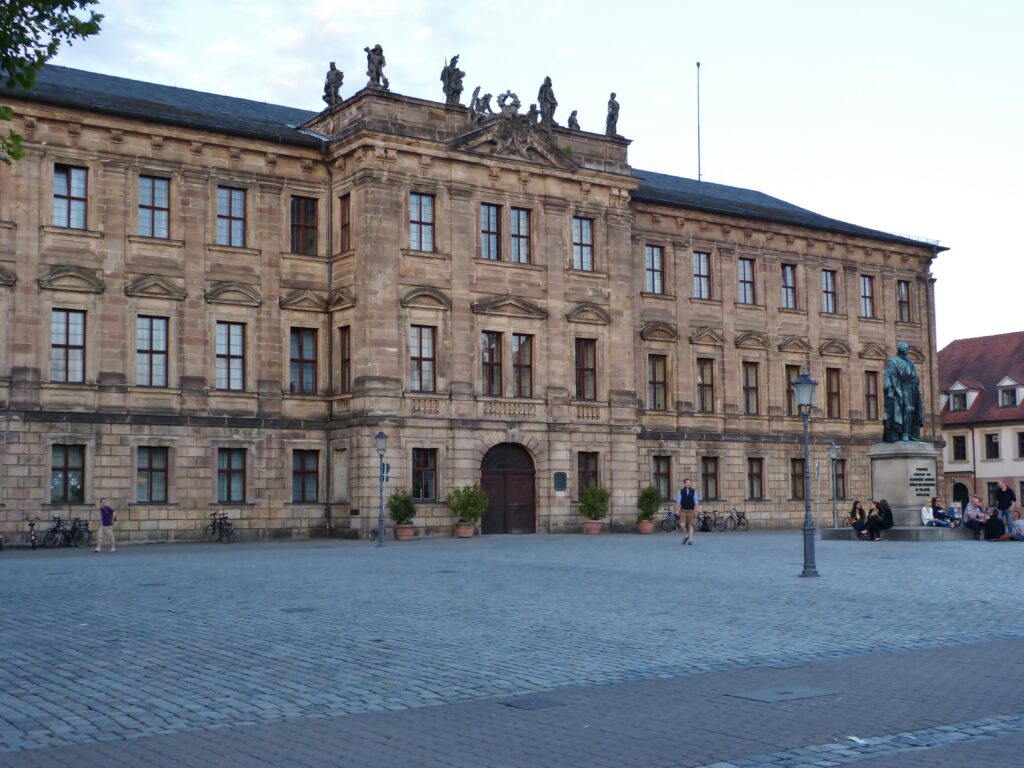
It was built between 1700 and 1704.
The six statues at the very top of the building depict Jupiter, Hercules as an old man, Mars, Minerva, Hercules as a young man and Juno.
The statue in front of the castle is of Frederick, Margrave of Brandenburg-Bayreuth from 1735 to 1763. He established the University of Erlangen-Nuremberg and the statue was a gift for the 100th anniversary of university.
Behind the castle is a garden which is called, aptly enough, the Castle Garden.
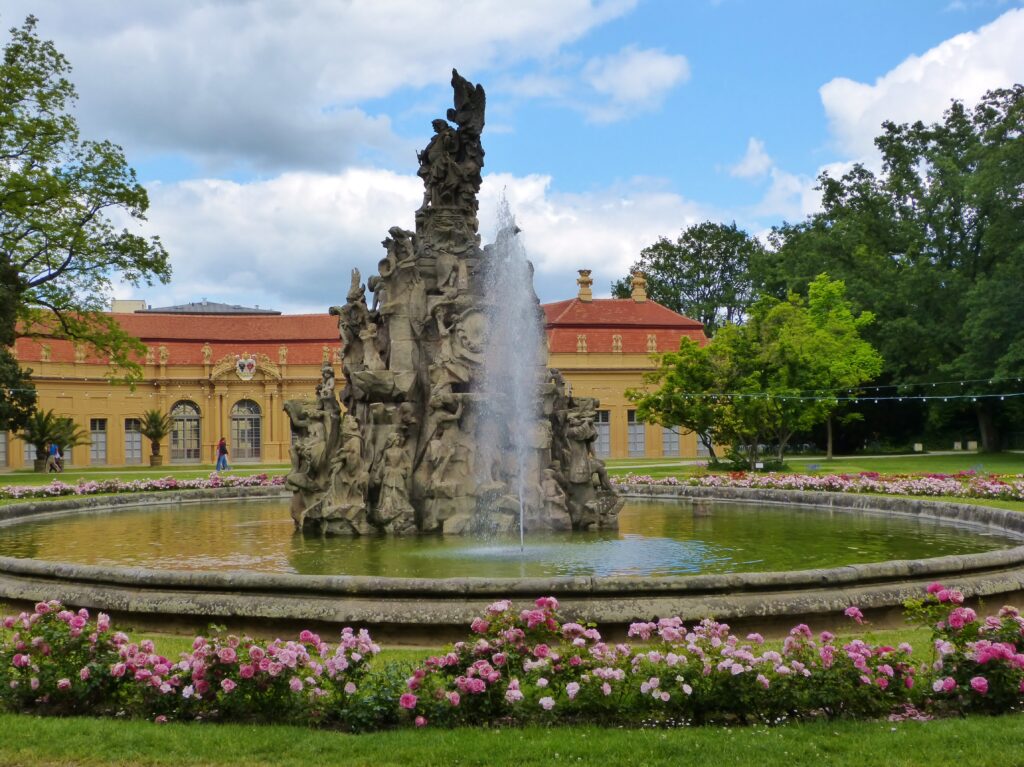
The main feature in the garden is the Huguenot fountain, built in 1706. It’s over 31 feet high.
There are 20 figures depicted on the fountain, with the highest human figure being Christian Ernst. He became Margrave of Brandenburg-Bayreuth in 1655 at the age of 10 and he’s the one who let the Huguenots settle in Erlangen in 1686. The leading Huguenot families are depicted at the bottom of the fountain. The motto of Erlangen translates to “Open by Tradition”, a reference to taking in the Huguenots.
At one time there was an inner ring road Erlangen. The buildings on that road had “hinged” corner like the one you see here, which is the only remaining such corner.
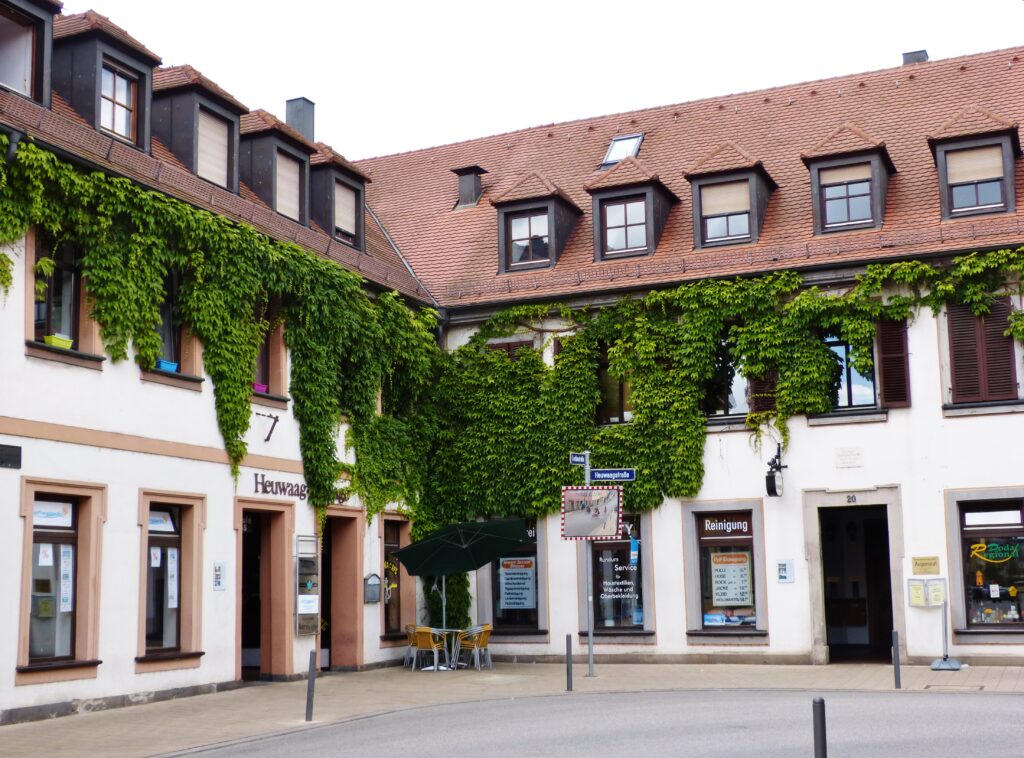
It’s called Richtersches Eck or Richter’s Corner, after the architect Johann Moritz Richter who created Erlangen’s town plan. The house was built in 1689.
You can take a peek inside the ground floor to see the exposed half-timber frame.
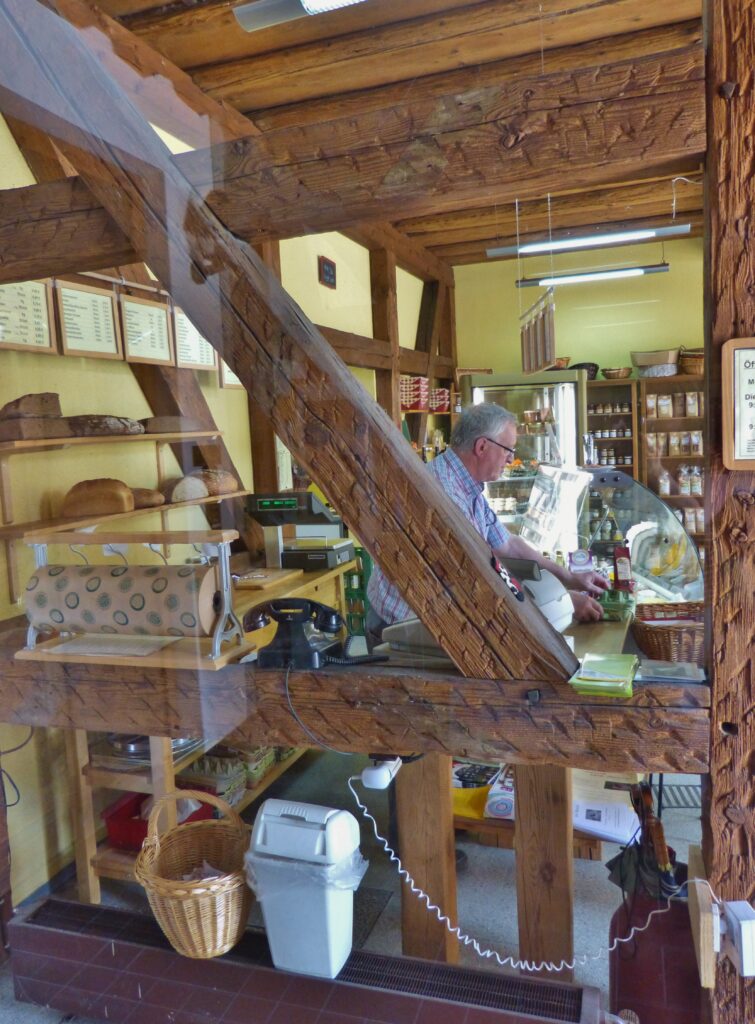
This type of house typically required about 200 tree trunks to build the frame. The trees came from forests that belonged to the Margrave.
This building is called the Wasserturn or Water Tower.
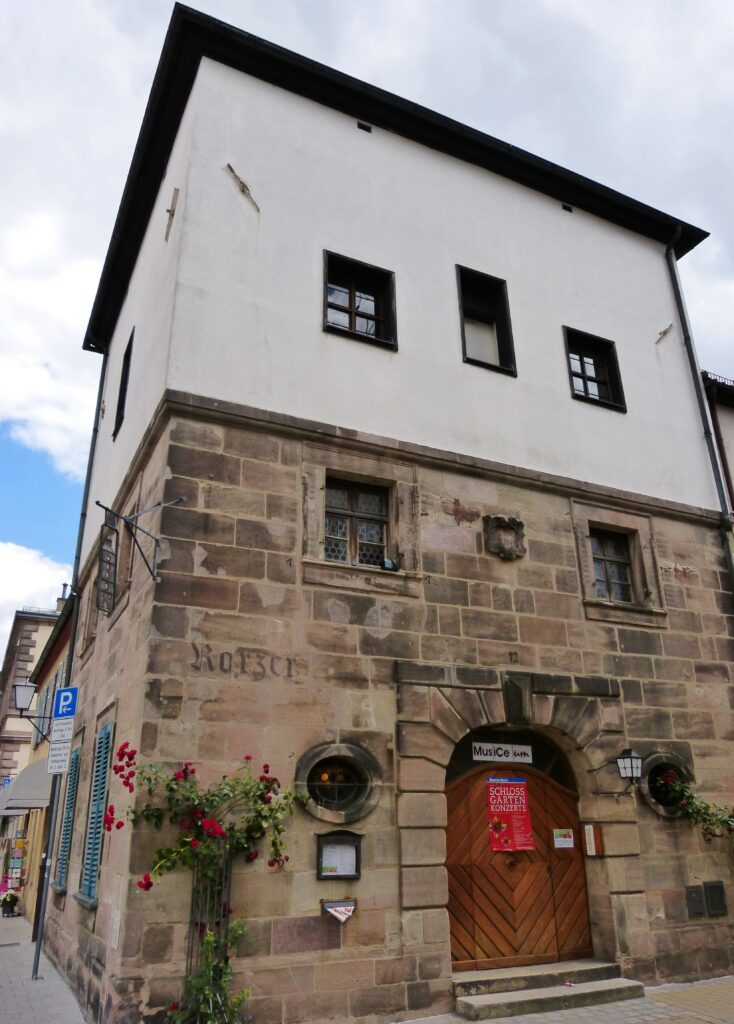
It used to power the Huguenot Fountain in the Castle Garden that you saw earlier, as well as other fountains. It was built in 1706 and was originally a 6-story building. It was reduced to a 3-story building in the early 19th century for structural reasons.
The building was later owned by the university and from 1839 to 1898, two rooms on the second floor were used to as a detention center for unruly students. They were allowed to have water, soup, bread and vegetables but no meat. They could, however, have alcohol as long as they paid for it themselves. Legend has it that one student, who was detained for 34 days, consumed 187 liters of beer during his stay and never paid his bill. That student, Christian Friedrich Daniel Schubart, later became a well-known German poet and writer
The last stop on our walking tour was the Old Town Church Square.
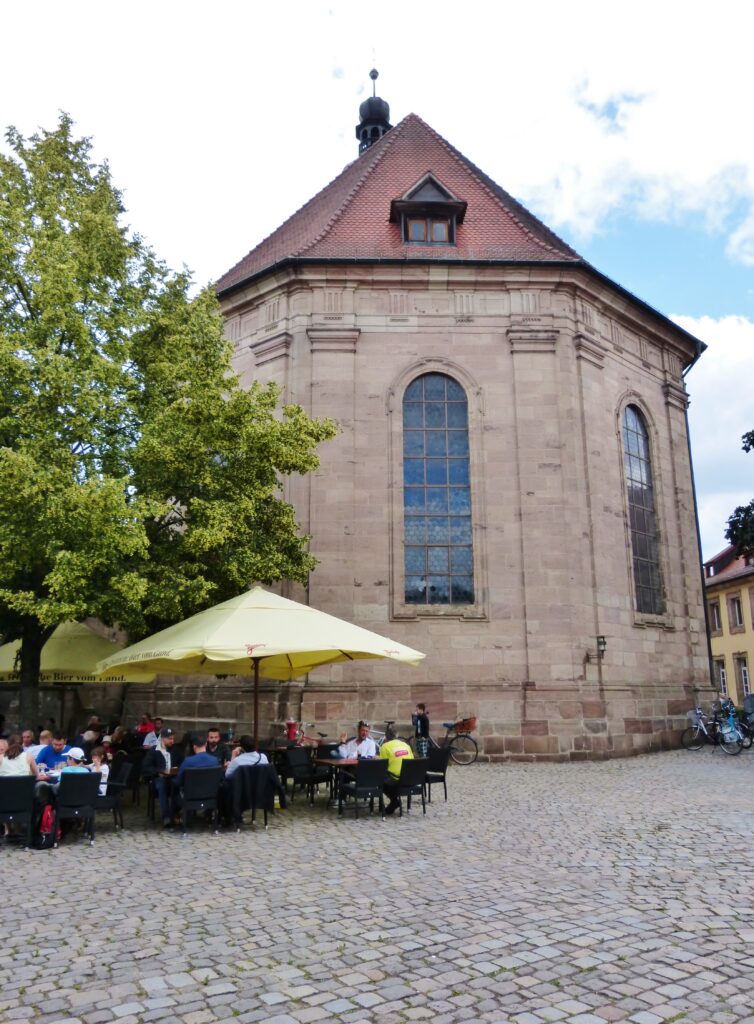
Prior to 1812, Erlangen had both an old town and a new town. Each had their own town hall, council and currency. The Old Town Church Square was the center of the old town and is now called Martin Luther Square. The church itself was destroyed a couple of times and was finally reconstructed between 1709 and 1726.
Back when there 18 breweries in Erlangen, six of them were located on this square. Even today there are cellars under most of the area where the beer used to be stored. Of the two remaining breweries, one is in the former old town and one is in the former new town.
There is now a restaurant next to the church. We sat outside where you see the yellow umbrella in the photo above, and had some non-alcoholic beverages before heading to the beer festival.
Sufficiently hydrated, we finally we made our way to the Burgberg or Castle Hill. (Side note: In English we pronounce the words Burg (castle) and Berg (mountain or hill) the same way. In German, however, Burg is pronounced more like “boorg” and Berg is pronounced like the English word “bear” with a g at the end.)
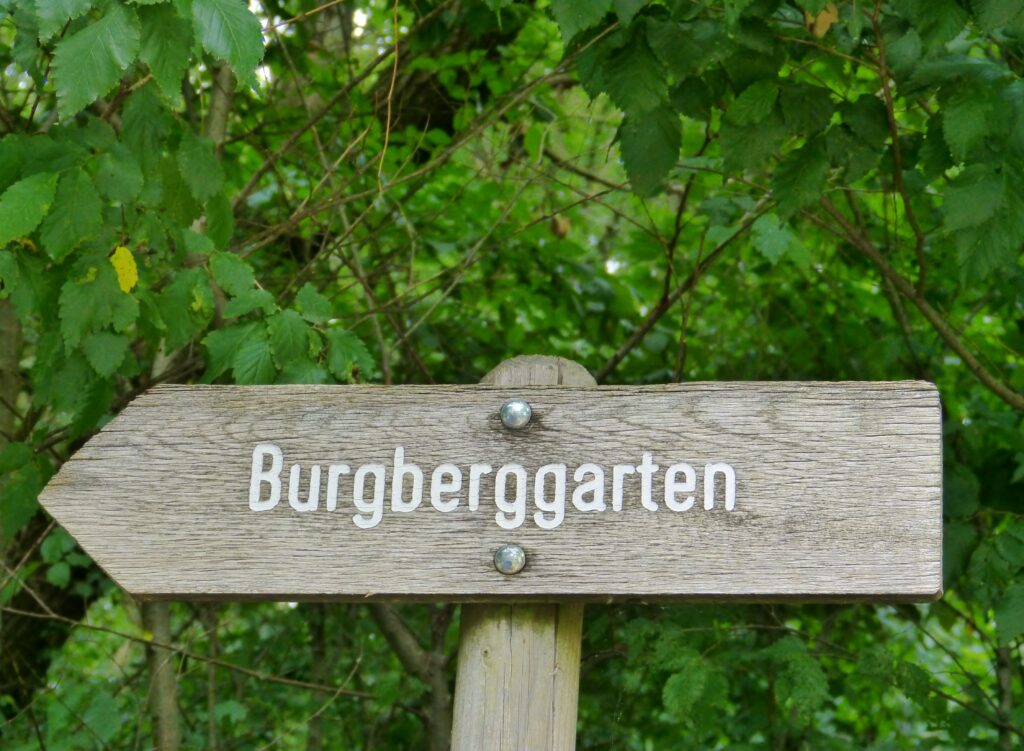
Burgberg is a sandstone hill that is almost 1,110 feet high. From 1675 until the widespread availability of refrigeration, the hill’s southern slope was used to house 16 beer cellars. Later, the cellars were used to cultivate mushrooms. They were also used as air raid shelters during World War II, although Erlangen sustained almost no damage during the war.
Approaching the festival area, the first thing you see is the giant Ferris wheel.
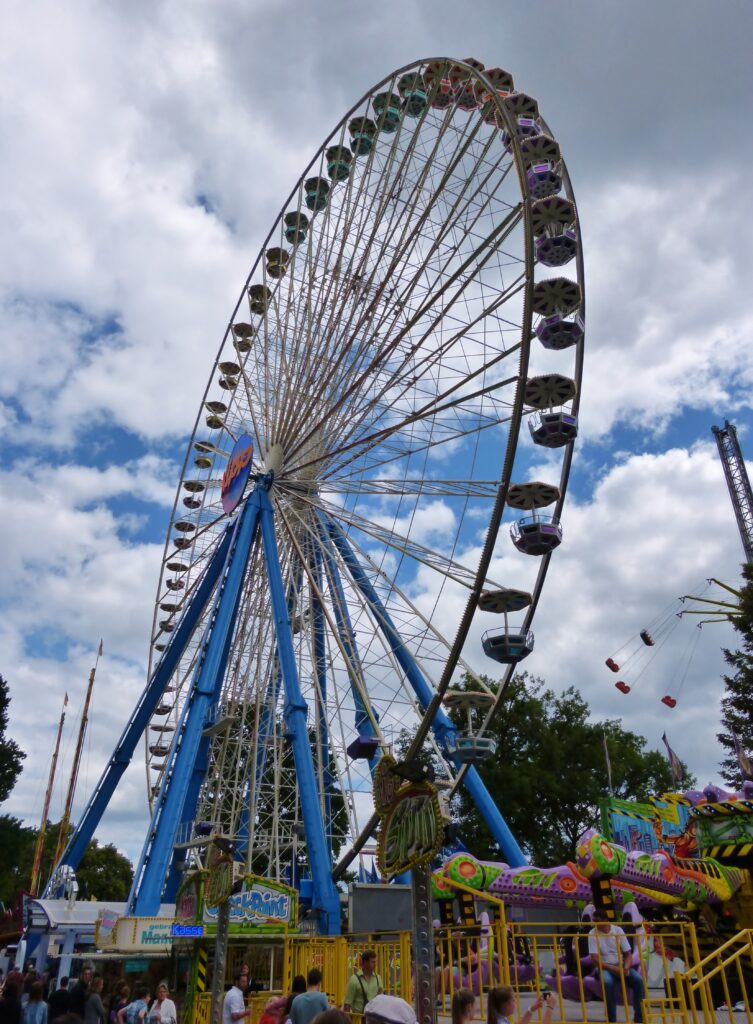
The next thing you see are the giant pretzels.
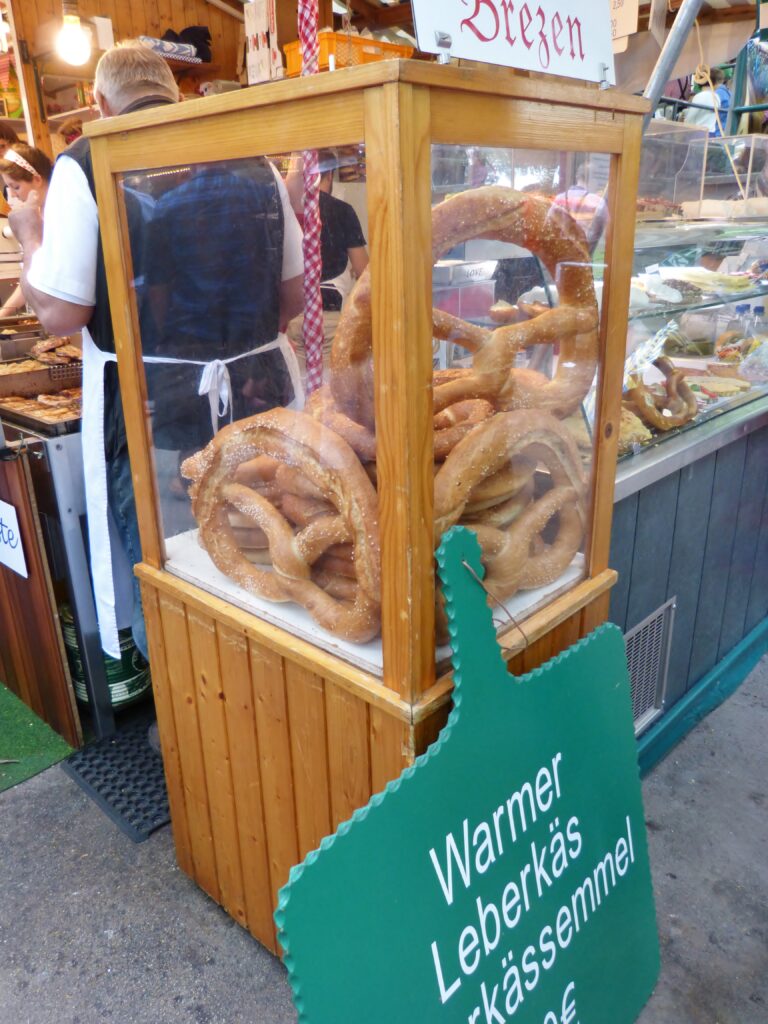
They are a specialty of the Bergkirchweih. I don’t know if you can really tell how big they are on the photo, but for some perspective, take a look at the man standing next to the pretzels. You can see that a pretzel is about as wide as he is. Seriously, they were huge pretzels.
This next photo will give you an idea of how wide the fest area was.
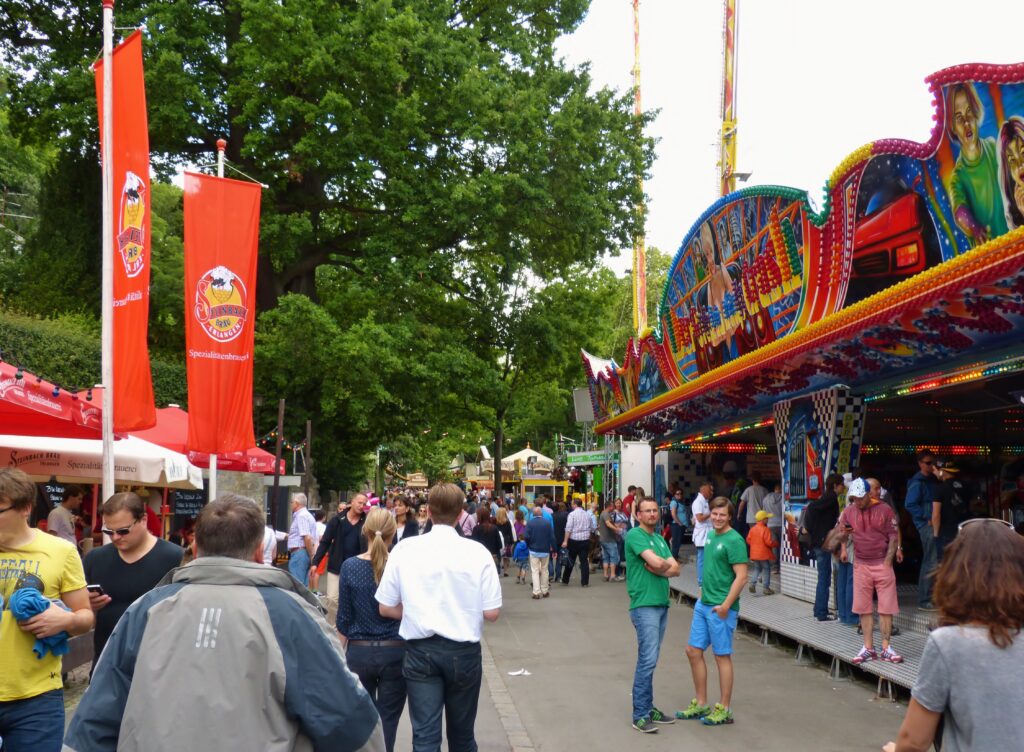
Not very wide at all. As I mentioned earlier, the fest attracts about a million people a year. I think 900,000 of them were there the day we went. When we went to leave later that evening, it was nearly impossible to move through the crowd in that narrow area. You just had to be carried along at whatever pace the crowd was moving. Or not moving.
This may give you an idea of how densely packed the crowd was when we were trying to leave.
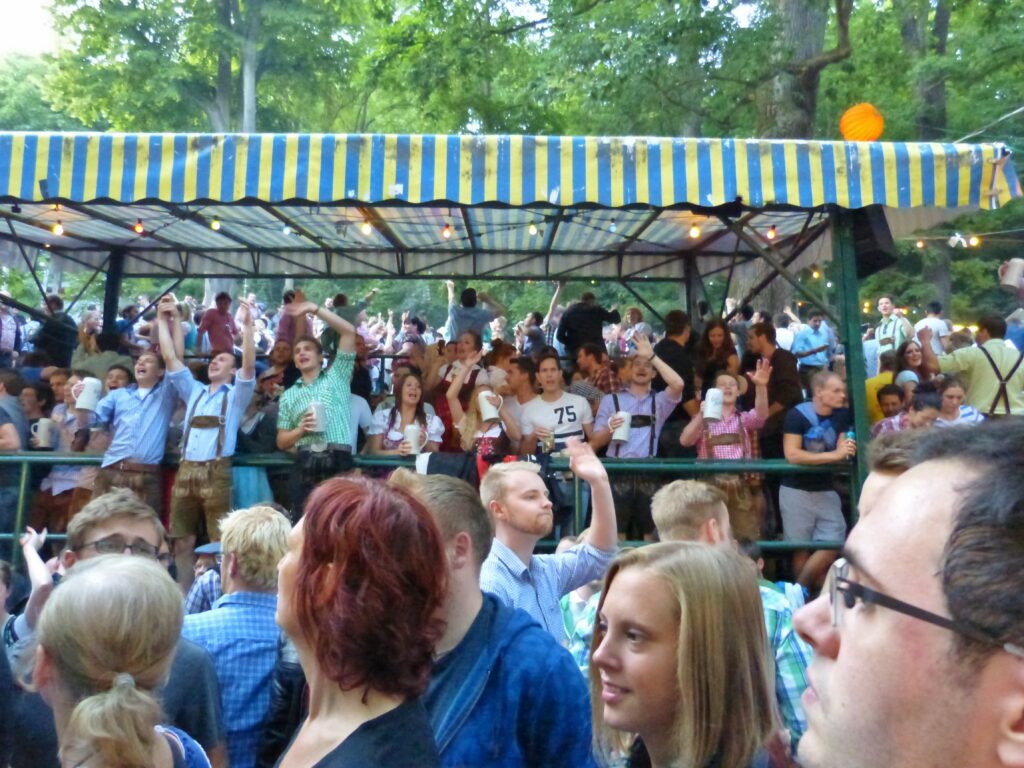
You can also see that the crowd was very young.
Luckily we had found places to sit and enjoy our Tipples of the Day before it got too crowded, and those places had a more “mature” clientele shall we say.
Our first stop was at an area called Fleischmann’s Garten.
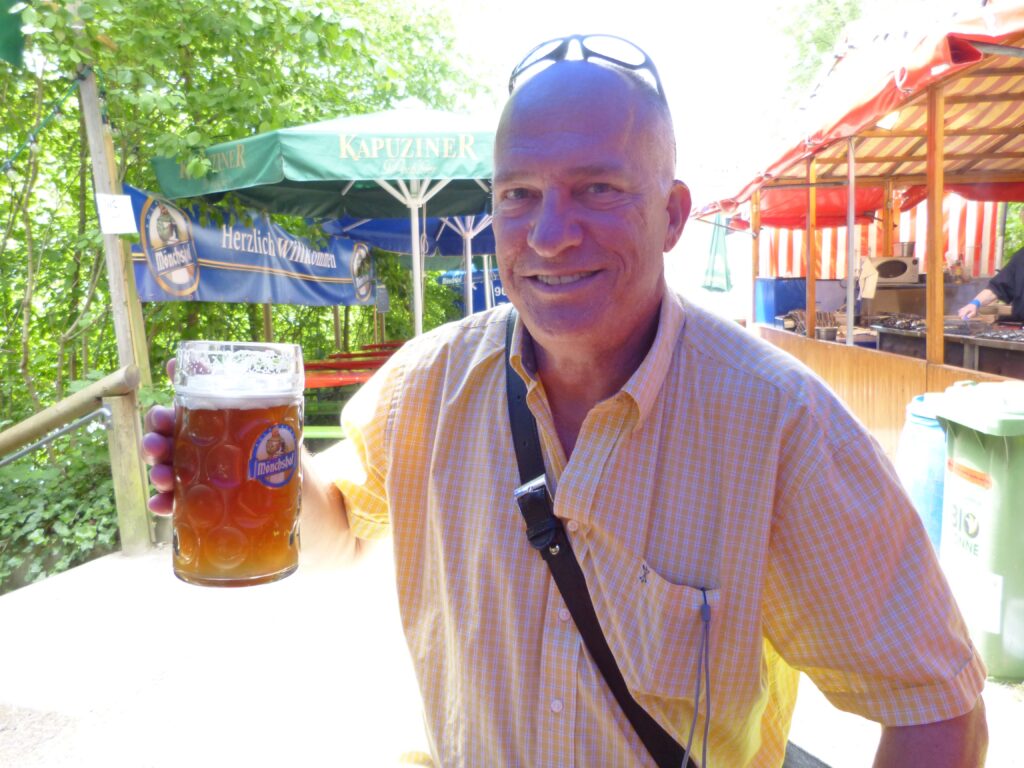
There’s Sean enjoying a Mönchshof beer. We didn’t stay at this place too long. Notice the grill on the right-hand side of the photo. The specialist of Fleischmann’s Garten was fish, and the smell of grilled fish just got to be a little much after a while.
Our next stop was Entla’s Keller.
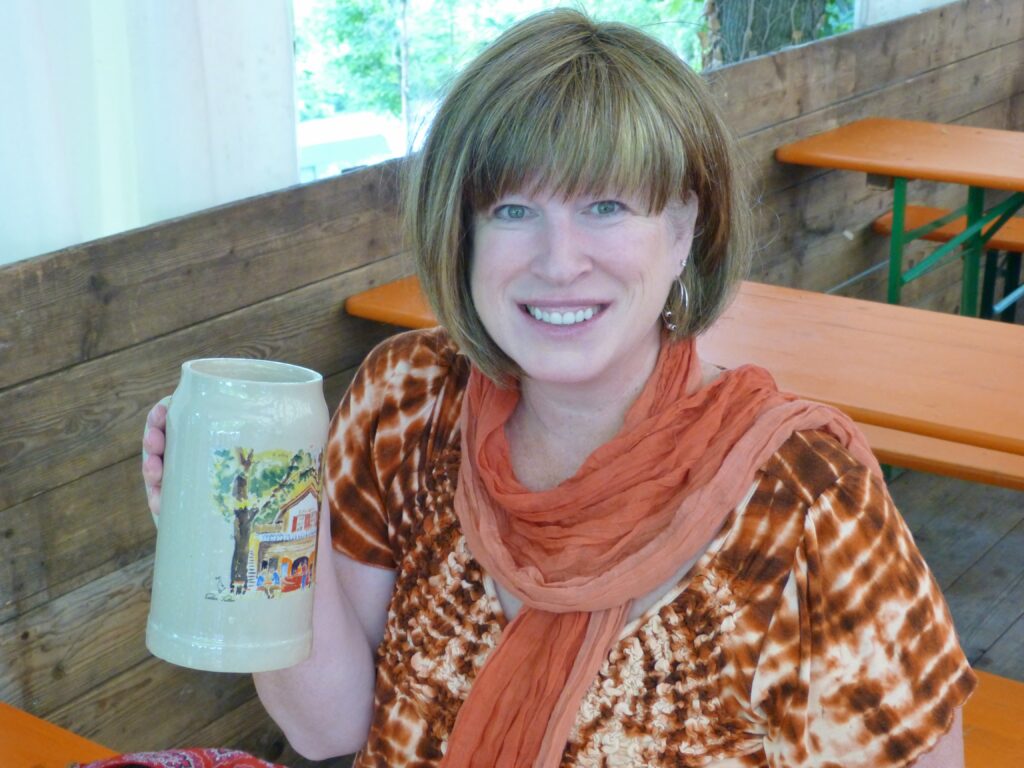
And there I am enjoying their Kirchweihbier.
Unlike most of the other cellars at the Burgberg that are open only for the Bergkirchweih, Entla’s Keller is open for several months each year. Although Sean did order a Schweinshaxe (pork knuckle) at Entla’s, you can also bring your own food in if you like. It’s allowed by Bavarian beer garden regulations.
The beer at the fest was about 8 Euro per liter, the equivalent of around $10.75 at today’s exchange rate. That’s less expensive than Oktoberfest prices, where a liter of beer last year was about 9.50 Euro or around $12.75. (Another side note: At Bavarian festivals, a liter of beer is called a Maß (Mass) and the letter a is pronounced as “ah”.)
One thing about this fest is that the women’s restroom facilities were woefully inadequate. After a couple of beers at Entla’s, I told Sean he was either going to have to bring me beer while I stood in line permanently or I’d have to stop drinking. The line for the restroom was about 50-deep and if you’re female and reading this you know how long it takes for a line of that size to move. You can’t wait until it’s time to use the facilities and then get in line. You have to plan ahead.
Anyway, Sean decided he’d had enough and we made our way through the crowd and back to the hotel.
There’s just a few more beer festivals that I’d like to experience before we leave Germany.
Which beer festival is your favorite?

